Quote:
Originally Posted by Bob Rowlands

Yup, if you can't use your hands you're done. 55 gallon burn barrel with air holes around the base works OK. I've warmed myself up by one at the gun range a few times.
|
So let's talk about winter
for gers/yurts.
Our main
source is electricity because it's very cheap here and even cheaper at night. About 4.5c per kWh in the day and 3c per kWh at night for comparison's sake. I'll add thermal photos in theme with this topic. (FLIR type). They were taken before the recent cold spell so they don't show what it's like now.
Here's our bed with wife and cats. The underfloor heating is clearly visible. Min/max temperatures are in the bar graph.
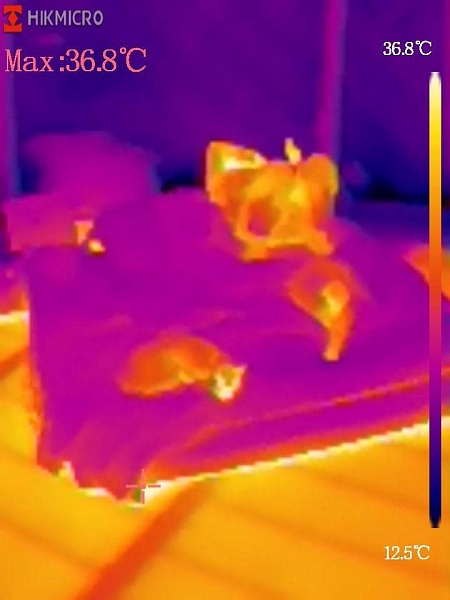
Wood stove warming up. It gets a lot hotter, perhaps to 300-400C.
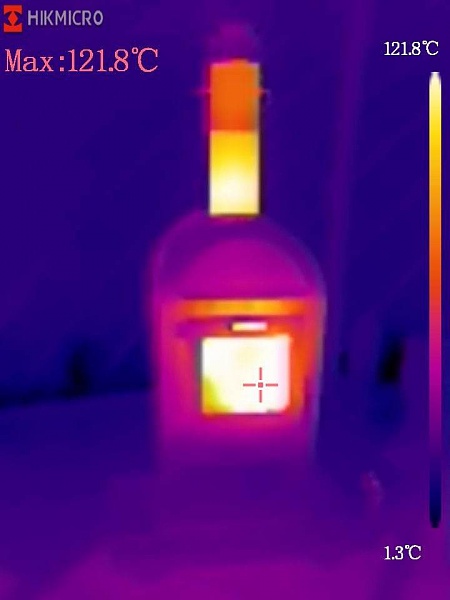
However, even with cheap electricity it can add up a LOT and we SHOULD have a backup with our somewhat unreliable grid power. It's not guaranteed. If the power goes off, we'll survive but our systems (particularly water) are vulnerable. I shudder to think about getting up in the night to turn on a manual start diesel generator to stop the pipes and water tank freezing.
Last night it dropped to -37C (-35F). The daytime high will be -22C (-8F).
Our main source of heat is electric underfloor. We have 6 zones in the 2 gers and bathroom/hallway. This uses about 7-10kWh for the whole area. The main supplementary heat source is wood stoves, one in each ger. If the electricity failed at night, we have a large propane space heater and a diesel air heater as a last resort (runs on a 12v battery).
This proved adequate last night (the coldest night so far in the gers), although our bedroom ger temperature dropped to 10C (50F) by the morning. That's almost a 50C (122F) difference between inside and outside - not too shabby. 10C in the morning feels okay in our ger with warm bedding but the first person out of bed will need to start wood fires to bring the inside temps up to a comfy 20C (70F) or so - that was my duty this morning. The sun has the same effect but we don't get hit by sun until about 10:30am (warming up the gers by 11:30am) due to our mountain valley aspect. At this point we can lower the underfloor heating or sometimes even turn it off.
What we can do to improve the
? We're making some insulated curtains for the doors and window. These are significant areas of heat loss. Behold (on a not too cold night).
From inside:
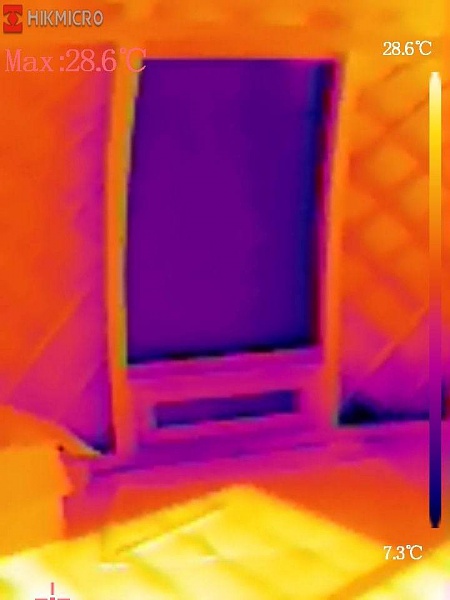
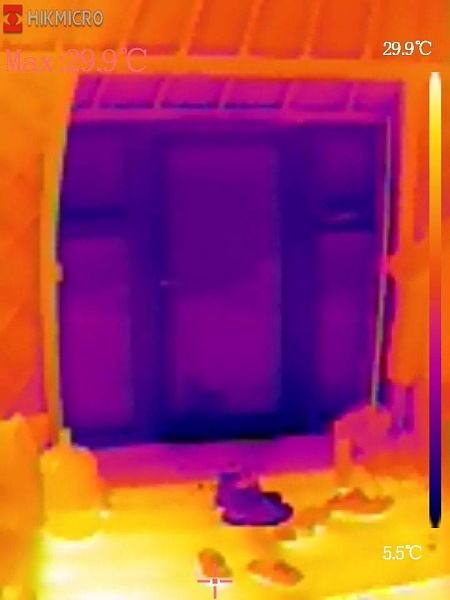
From outside:
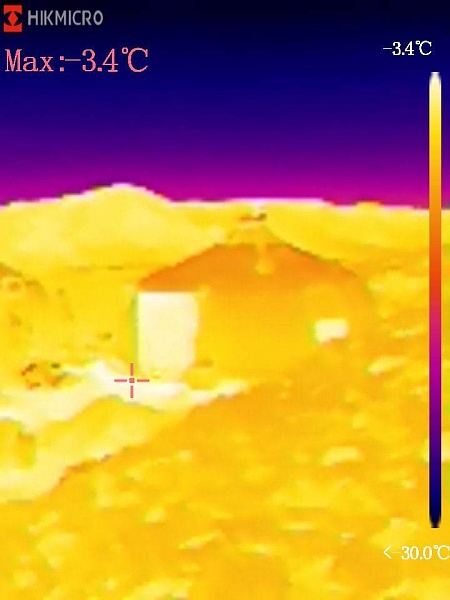
Note that there isn't as much heat loss in the crown despite it being single-glazed. So doors are 1st priority and windows 2nd.
So that's this week's project because, although this week will "only" be in the
mid -30C range, it can get to the mid -40C range in January.
The next issue is to insulate our outer buildings. These are metal buildings and I wanted to monitor them without physically going there - and losing heat by opening the doors. They are windowless. The well-house is a metal stud building with metal exterior walls and OSB interior walls. The
is basalt wool batts.
We decided to just insulate one of our two shipping containers this winter (20 tons each). The insulation is 5cm (2") EPS sheets, floor to ceiling and spray foam at the seams. It was the cheapest way by far.
For heating them, we bought 2 electric radiators with WIFI connectivity. Unfortunately, WIFI doesn't penetrate metal buildings very well. So I ran ethernet cable to each, added a POE injector (provides) power and WIFI access points. These allow the radiators to be connected via WIFI and then ethernet to our router in the ger.
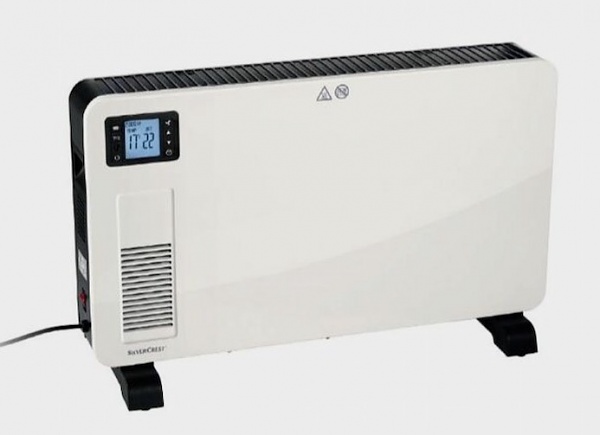
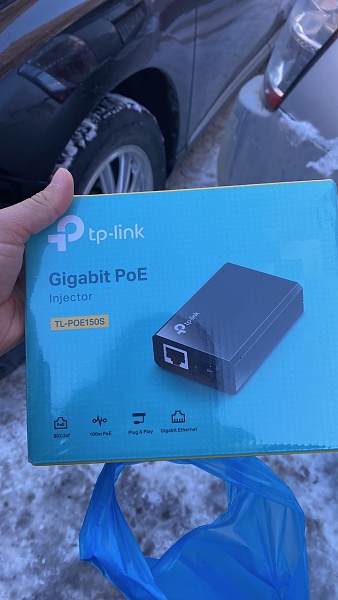
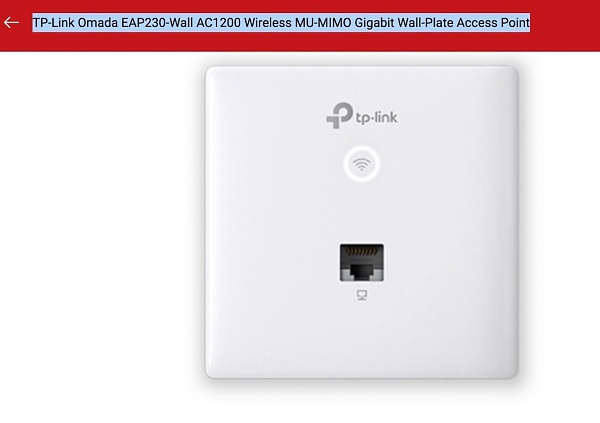
Here we can see the "Tuya" app which allows me to monitor and adjust the two different radiators. The reading is for the shipping container which is holding the temperature that I set - a good result on an extremely cold night.
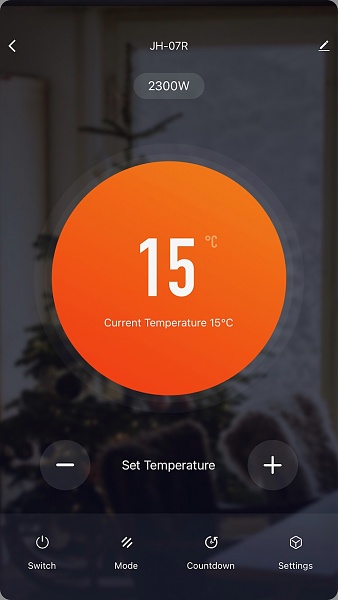
The only problem remaining problem is that if the power goes out, the radiators can NOT remember their settings when the power returns. They don't go back to where they were without human intervention. This sucks. I can't think of a way around this yet, so I have to monitor the heating regularly. If I was away, I'd be screwed. So we probably won't be able to go without a house sitter who I'll need to teach the system.
Whereas the underfloor heating remembers the settings that I chose when the power returns. I'd like to add smart thermostats to the underfloor heating but have to buy them from abroad.
Luckily, we don't really have power-cuts at night (fingers crossed). They are generally a daytime thing.

